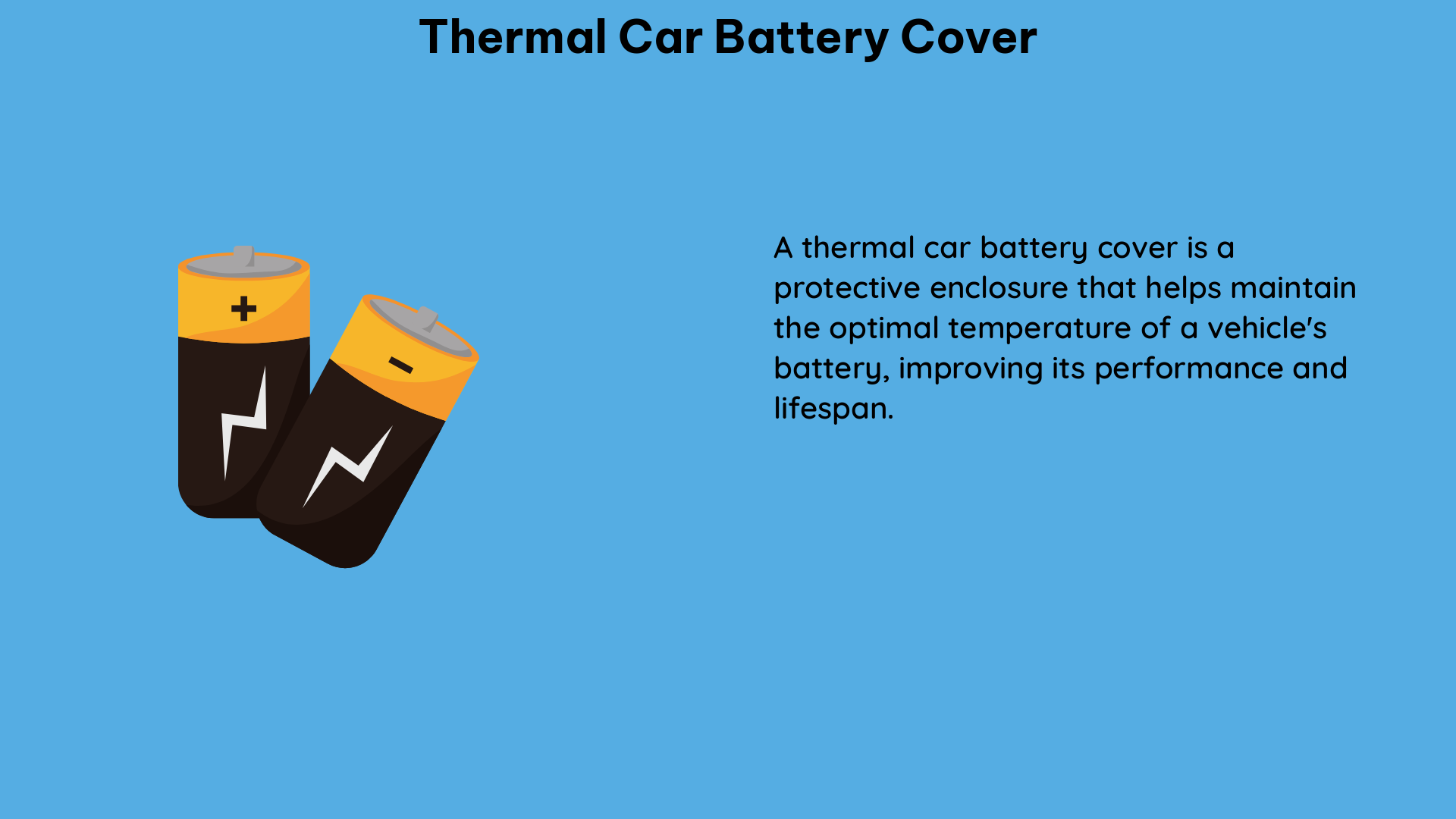The thermal properties of a car battery cover are crucial to ensure the safe and efficient operation of the vehicle. A well-designed thermal car battery cover can help maintain the optimal temperature range for the battery, preventing thermal runaway and other heat-related issues that can compromise the battery’s performance and lifespan.
Understanding the Thermal Behavior of Car Batteries
Lithium-ion (Li-ion) batteries, commonly used in electric vehicles (EVs), are susceptible to thermal runaway, a phenomenon where the battery’s internal temperature rises rapidly, leading to the release of flammable gases and potential fire hazards. A study conducted by Kang Sungwook et al. found that the peak heat release rate (pHRR) and total heat released (THR) during a fire in a battery electric vehicle (BEV) were primarily governed by the combustion characteristics of the passenger cabin materials, rather than the Li-ion battery pack itself. However, a jet fire discharging from the Li-ion battery pack can still lead to rapid flame spreading to adjacent combustible components, accelerating the fire growth.
Another experiment by the Fire Protection Research Foundation (FPRF) and UL Solutions focused on the thermal runaway of Li-ion batteries in an e-scooter. The results showed that both external overheating and overcharging of the battery cells led to complete propagation of thermal runaway, with the overcharging method resulting in flaming combustion up to 7 feet above the battery pack.
Designing a DIY Thermal Car Battery Cover

To address these thermal challenges, a DIY thermal car battery cover can be a cost-effective and customizable solution. Here are the key technical specifications to consider when designing a thermal car battery cover:
Material Selection
The material used for the thermal car battery cover should have high thermal insulation properties to effectively protect the battery from external heat sources and prevent heat buildup. Some suitable materials include:
- Ceramic-based materials: Ceramic materials, such as silica aerogel or ceramic fiber mats, offer excellent thermal insulation properties with low thermal conductivity (typically around 0.02-0.05 W/m·K).
- Silicone-based materials: Silicone-based foams or rubbers can also provide good thermal insulation, with thermal conductivity values ranging from 0.1 to 0.3 W/m·K.
- Composite materials: Hybrid materials, such as ceramic-reinforced silicone or carbon fiber-reinforced polymer composites, can combine the thermal insulation properties of ceramics with the mechanical durability of polymers.
Thickness Considerations
The thickness of the thermal car battery cover should be optimized to balance thermal insulation and ventilation requirements. A thicker cover will provide better insulation, but it may also restrict airflow and lead to overheating. Typically, a cover thickness of 5-10 mm is recommended, depending on the specific material properties and the size of the battery.
Fit and Ventilation
The thermal car battery cover should be designed to fit snugly around the battery, ensuring a tight seal and minimizing air gaps that could compromise the insulation. Additionally, the cover should incorporate ventilation holes or slots to allow for proper airflow and prevent heat buildup within the enclosure. The size and placement of these ventilation features should be carefully considered to maintain the optimal balance between insulation and cooling.
Durability and Weatherproofing
The thermal car battery cover should be durable enough to withstand the rigors of daily use, including exposure to vibrations, moisture, and temperature fluctuations. The materials used should be resistant to cracking, deformation, and degradation over time. Weatherproofing features, such as water-resistant coatings or seals, may also be necessary to protect the battery from environmental factors.
Thermal Management Considerations
In addition to the physical design of the thermal car battery cover, the overall thermal management system of the vehicle should be considered. An on-board, online procedure for the evaluation and update of the battery thermal behavior could be beneficial, as it would allow for real-time monitoring and adjustment of the thermal management system.
Composite battery enclosures, as mentioned in the studies, can offer several advantages over traditional metal enclosures, including lower mass, higher design freedom, faster assembly, and better flame resistance/fire containment. Incorporating these advanced materials and design principles into the thermal car battery cover can further enhance the overall thermal management of the vehicle.
Conclusion
Designing a DIY thermal car battery cover requires a deep understanding of the thermal behavior of Li-ion batteries and the specific requirements for effective insulation and ventilation. By carefully selecting the right materials, optimizing the cover’s thickness and fit, and incorporating durable and weatherproof features, you can create a customized solution that enhances the safety and efficiency of your vehicle’s battery system.
Remember to always consult with professional engineers or experts when working on critical vehicle components to ensure the safety and reliability of your DIY thermal car battery cover.
References:
- Kang Sungwook, Kwon Minjae, Yoon Choi Joung, and Choi Sengkwan. “Full-scale fire testing of battery electric vehicles.” ScienceDirect, 2023.
- “Experiments Completed for Intentional Thermal Runaway on Lithium-Ion Batteries.” Fire Protection Research Foundation, 2022.
- “Live update of the battery thermal parameters for reliable short-term operation.” ScienceDirect, 2024.
- “Got new battery, do I need this battery jacket/blanket?” Reddit, 2022.
- “Price, performance, protection: EV battery enclosures, Part 1.” CompositesWorld, 2022.

The lambdageeks.com Core SME Team is a group of experienced subject matter experts from diverse scientific and technical fields including Physics, Chemistry, Technology,Electronics & Electrical Engineering, Automotive, Mechanical Engineering. Our team collaborates to create high-quality, well-researched articles on a wide range of science and technology topics for the lambdageeks.com website.
All Our Senior SME are having more than 7 Years of experience in the respective fields . They are either Working Industry Professionals or assocaited With different Universities. Refer Our Authors Page to get to know About our Core SMEs.